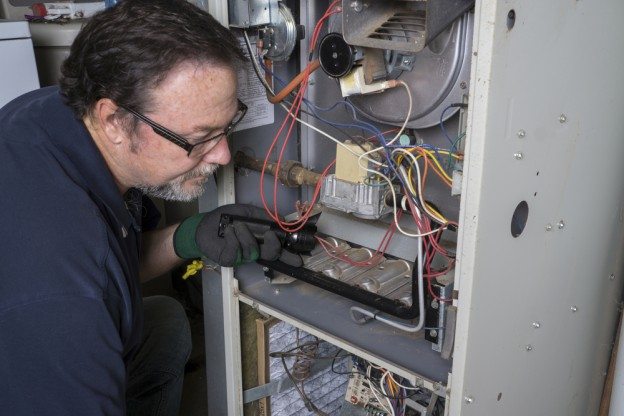Schools are starting up again for children, which means fall is right around the corner! You may have also noticed chilly evening temperatures and crisp morning air too. If you’re very sensitive to the cold you may have already turned on your heater.
When you first turn your heater on for the fall and winter season, whether this year or last, you may notice a certain smell. Why does your heater smell bad when you turn it on? There may be a few reasons why you notice that awful, burning smell.
Dust
Your heater has been dormant all summer long, which means it’s bound to accumulate some dust. The dust or other debris can build up on the heating elements or the heat exchanger. The bad, burning smell is the dust getting burned off of these parts. As the warm air is pumped throughout your home, so is the bad smell. There really isn’t much you can do about the dust. Just know that it’s nothing to worry about.
Clogged Filters
You may also notice a bad smell if your heater’s motor is being overworked. The most likely culprit for an overworked motor is a clogged filter. Changing your air filter will help you to avoid the bad smell; failing to change it will only make it worse and your motor may give out completely. If you haven’t changed your air filter recently, just before turning on your heater is a great time to do so.
Enough Clearance
Over the summer it’s possible that you simply placed an object too close to your heating unit or the vents. When your heater turns on for the first time, it’s easy for those things to get too hot or even burn. Look closely for any plastic material, fabric, or flammable items near your heater and make sure there is enough clearance between the two.
When to worry
In most cases, a burning or bad smell when you first turn on your heater is normal. However, there are times when it not a smell you should ignore. After turning on your heater you may notice a bad smell immediately, or it may take a few days to notice. But after the smell is present it shouldn’t last for more than 30 to 45 minutes. If the smell lasts longer than that, you should call a professional HVAC repair company like Complete Heating and Air.
If you smell something resembling rotten eggs, call your utility company immediately. Many utility companies will put odor-causing substances in natural gas, which will normally not have any smell. If you are smelling rotten eggs it could mean there is a gas leak.
If you think something is wrong with your heater, listen to your instincts and call someone you can trust. Having your HVAC system inspected for any needed repairs at least once a year will ease your mind despite a bad smell when first turning on your heater. To schedule an inspection, call Complete Heating and Air.



